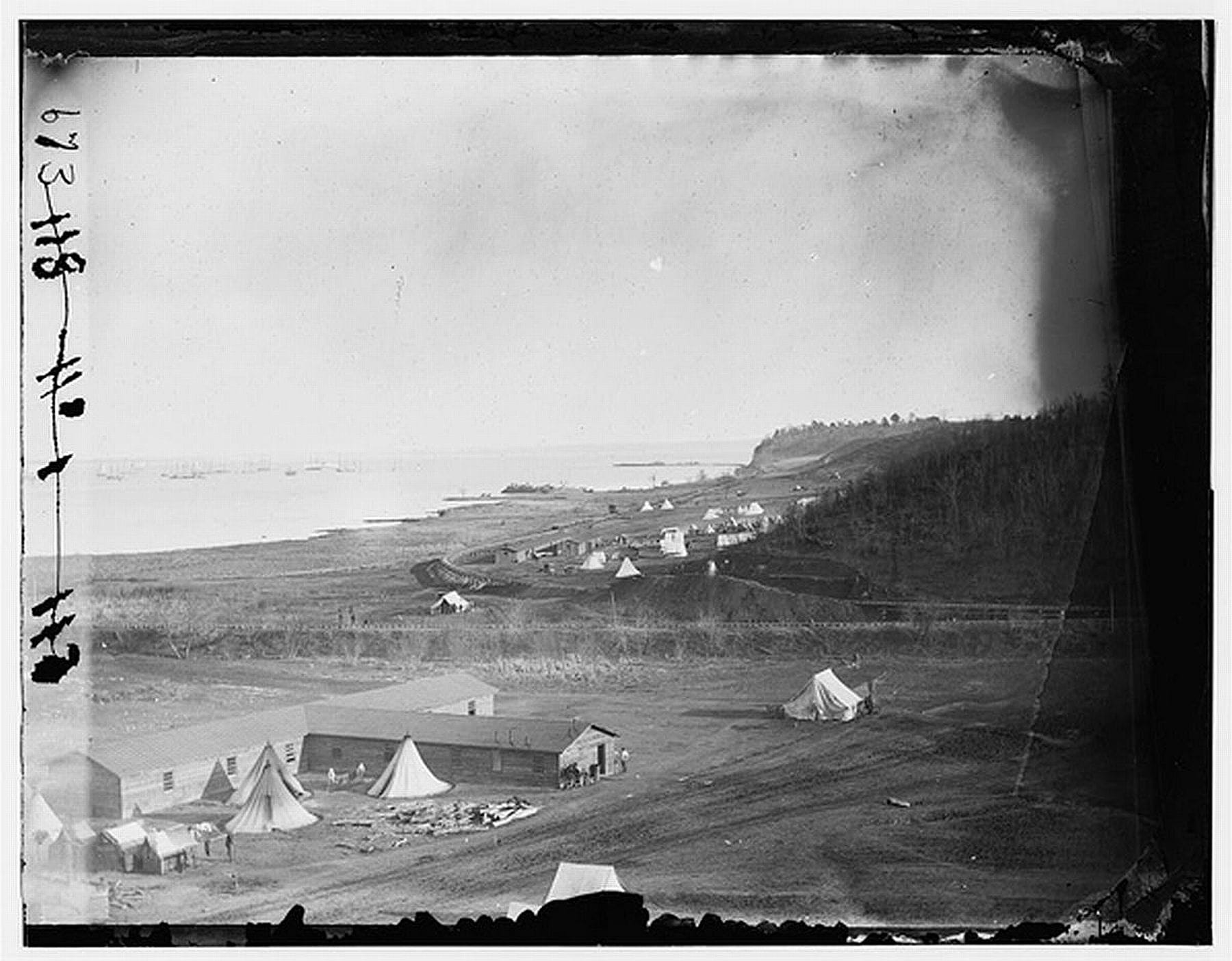Aquia Landing, nestled on the Virginia banks of the Potomac River, offers a captivating blend of historical significance and natural beauty. This hidden gem provides a tranquil escape for nature lovers and history buffs alike, with opportunities for recreation, reflection, and exploration.
Discovering Aquia Landing
Aquia Landing isn’t merely a park; it’s a journey through time. Here, the echoes of Civil War supply trains mingle with the gentle lapping of waves against the shore. Whether you’re seeking a peaceful retreat or an engaging historical experience, Aquia Landing offers a unique blend of past and present.
The park’s inviting beach beckons visitors to sink their toes into the soft sand and bask in the sun’s warmth while gazing out at the sparkling Potomac. Children can splash and play in the shallows, while adults might unwind with a good book or try their luck fishing in Aquia Creek. Kayaks are available for rent, providing a different perspective of the calm waters and hidden coves.
[Intrigued by the concept of Social Business? Come, discover afrozi yunus, the pioneer and leading figure in the field, who has created a remarkable impact in the realm of social entrepreneurship.]
Aquia Landing’s Rich History
Aquia Landing holds a significant place in American history. During the Civil War, it served as a vital port and railroad hub, bustling with activity as supplies flowed to the Union army. The park’s grounds whisper tales of hurried soldiers, rumbling supply trains, and the somber atmosphere following the Battle of Fredericksburg.
Beyond the Civil War, Aquia Landing played a crucial role in the Underground Railroad, offering a beacon of hope to enslaved people seeking freedom. This “Gateway to Freedom” provided a vital stepping stone on their perilous journey northward.
Today, Aquia Landing is recognized as a Virginia Bird & Wildlife Trail site, a haven for birdwatchers and nature enthusiasts. Majestic bald eagles, colorful songbirds, and graceful herons are among the diverse wildlife that call this tranquil ecosystem home.
Ongoing research continues to unravel the mysteries of Aquia Landing’s past. Archaeological investigations may reveal further remnants of the Civil War era or artifacts related to the Underground Railroad, adding another layer of intrigue to this already captivating location.
The Battle of Aquia Creek: A Pivotal Early Skirmish
The Opening Salvo
The Battle of Aquia Creek (May 29 – June 1, 1861), a relatively small but strategically significant clash, foreshadowed the crucial role of naval power in the Civil War. This early engagement served as a testing ground, revealing key insights about the conflict’s future trajectory.
Chronology of Key Events:
- April 17, 1861: Virginia secedes from the Union.
- April 22, 1861: Robert E. Lee takes command of Virginia State forces.
- April 24, 1861: Confederate engineers select Split Rock Bluff at Aquia Creek for battery placement.
- April 27, 1861: Lincoln extends the Union blockade to Virginia and North Carolina.
- May 8, 1861: Construction begins on Confederate fortifications at Aquia Creek.
- May 29 – June 1, 1861: The Battle of Aquia Creek takes place.
- June 27, 1861: Commander James Harmon Ward becomes the first US Navy officer killed in the Civil War (while involved in operations related to the Potomac River blockade, not directly during the Battle of Aquia Creek).
- March 9, 1862: Confederates abandon the Aquia Landing batteries.
Strategic Importance of Aquia Creek
The Potomac River, a major artery for supplies and communication, held immense strategic value. Aquia Creek, with its prime defensive position overlooking the river, became a focal point of contention. The Confederates established artillery batteries at Split Rock Bluff to protect the vital Fredericksburg and Potomac Railroad, a lifeline for Confederate supplies and troops.
The Union, recognizing the creek’s strategic significance, dispatched gunboats to challenge the Confederate position. The ensuing battle involved an exchange of cannon fire, a tense standoff on the water. While the Battle of Aquia Creek resulted in a tactical stalemate, it underscored the growing importance of naval power and the vulnerability of the Fredericksburg and Potomac Railroad.
The Aftermath and Lasting Impact
Though the Confederates initially defended their position, they abandoned Aquia Creek in 1862, suggesting the effectiveness of the Union’s naval strategy. This seemingly small clash had a ripple effect, shaping the course of the war and highlighting the strategic importance of waterways and supply lines.
Can You Swim in Aquia Creek?
Yes, swimming is permitted at the designated beach area within Aquia Landing Park, where Aquia Creek flows into the Potomac River. This quarter-mile stretch of sandy shore offers a refreshing escape, complemented by picnic pavilions and restrooms for visitor convenience.
However, it’s crucial to check current water quality reports before entering the water. Resources like the Potomac Riverkeeper and Swim Guide provide up-to-date information on water conditions, which can fluctuate due to rainfall and other environmental factors.
Beyond swimming, Aquia Landing Park offers a variety of recreational activities, including fishing, kayaking, picnicking, and boat watching. The park’s historical significance, including its role in the Civil War and the Underground Railroad, adds another dimension to the visitor experience.
For planning purposes, Aquia Landing Park is located at 2846 Brooke Road in Stafford, Virginia. You can contact the park authorities for additional information.
How Deep is Aquia Creek?
Aquia Creek, a 27.6-mile tributary of the Potomac River, generally ranges from two to four feet deep, with some areas reaching five feet. This varying depth contributes to the creek’s diverse ecosystem, supporting a variety of aquatic life.
It’s important to note that the creek’s depth can fluctuate due to tides, rainfall, and seasonal changes. Boaters, especially those with larger vessels, should exercise caution and be aware of potential shallow spots. Smaller crafts like kayaks, canoes, and paddleboards are ideal for navigating Aquia Creek’s gentle waters.
While swimming is permitted in designated areas, it’s always wise to check for posted advisories and be mindful of changing conditions. The shallow depths make certain areas suitable for wading and exploring.
Aquia Creek’s historical significance extends beyond recreation. Its sandstone was quarried to build iconic structures like the White House and the U.S. Capitol Building. The creek also played a role in the Battle of Aquia Creek during the Civil War.
Aquia Landing Park, situated at the confluence of Aquia Creek and the Potomac River, provides access to the creek for various recreational activities. The park’s historical connections to the Underground Railroad and the Richmond, Fredericksburg and Potomac Railroad further enrich the visitor experience. Open daily from 8 am to dusk, Aquia Landing Park offers a free and accessible destination for those seeking natural beauty, historical insights, and recreational opportunities. The park’s marsh also attracts diverse birdlife, adding to its allure for nature enthusiasts. Nautical charts and maps provide detailed water depths and navigational information for safe passage through Aquia Creek.
Key Points about Aquia Landing:
- Historical Significance: Civil War supply port, railroad hub, major stop on the Underground Railroad.
- Natural Beauty: Inviting beach, scenic Potomac River views, designated Virginia Bird & Wildlife Trail site.
- Recreational Opportunities: Swimming, fishing, kayaking, picnicking.
- Educational Value: Site of Civil War battlefields, ongoing historical research.
- Tranquil Setting: Serene atmosphere, diverse ecosystem supporting a variety of wildlife.
- Unlock Elemental 2 Secrets: Actionable Insights Now - April 2, 2025
- Lot’s Wife’s Name: Unveiling the Mystery of Sodom’s Fall - April 2, 2025
- Photocell Sensors: A Complete Guide for Selection and Implementation - April 2, 2025

















1 thought on “Aquia Landing: A Gateway to History and Recreation on the Potomac”
Comments are closed.